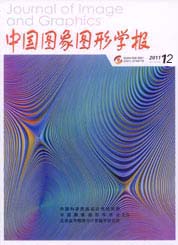
几种矢量图像噪声去除变分模型的边缘保持比较
摘 要
矢量图像噪声去除的变分模型必须考虑不同通道图像间的耦合以保持图像边缘,但所得到的模型复杂、计算效率低,且不同耦合方法对应的模型的边缘保持质量不同。本文首先设计了目前已经提出的这类变分模型的快速Split Bregman算法,然后通过大量数值实验对不同模型的边缘保持特性和计算效率进行了比较。所研究的模型分别使用LTV(layered total variation)规则项、MTV(multichannel total variation)规则项、CTV(color total variation)规则项、PA(polyakov action)规则项和RPA(reduced polyakov action)规则项。实验结果表明CTV模型对矢量图像去噪边缘保持最好,其他依次是PA模型、MTV模型、RPA模型和LTV模型;LTV模型计算效率最高,其他依次是MTV模型、RPA模型、CTV模型和PA模型。
关键词
Comparison of the edge preservation capabilities of different variational models for vectorial image denoising
Abstract
Variational models for vectorial image denoising involve couplings of different channels to preserve edges, which lead to problems of complexity and efficiency. Meanwhile, different types of couplings result in different edge preserving effects. The objective of our work is to design fast Split-Bregman algorithms for a couple of variational models which have been proposed in recent years and compare their edge preserving properties and their efficiency. Five variational models for vectorial image denoising using different regularizers are studied: the LTV (layered total variation) regularizer, the MTV (multichannel total variation) regularizer, the CTV (color total variation) regularizer, the PA (polyakov action) regularizer, and the RPA (reduced polyakov action) regularizer. The order of their edge preserving quality and computation efficiency are given based on numerical experiments. It is shown that the CTV model is the best method for edge preserving followed by the PA model, the MTV model, the RPA model, and the LTV model. The LTV model is the fastest model, followed by the MTV model, the RPA model, the CTV model, and the PA model.
Keywords
|



 中国图象图形学报 │ 京ICP备05080539号-4 │ 本系统由
中国图象图形学报 │ 京ICP备05080539号-4 │ 本系统由